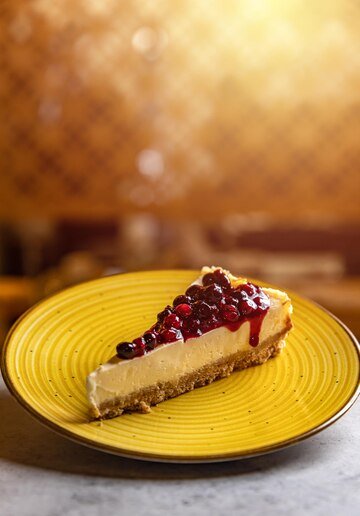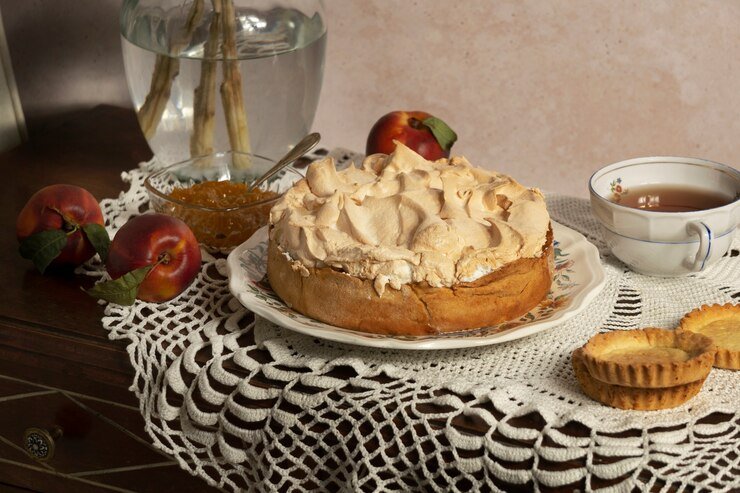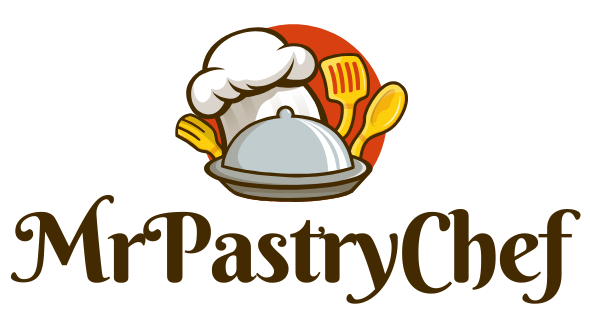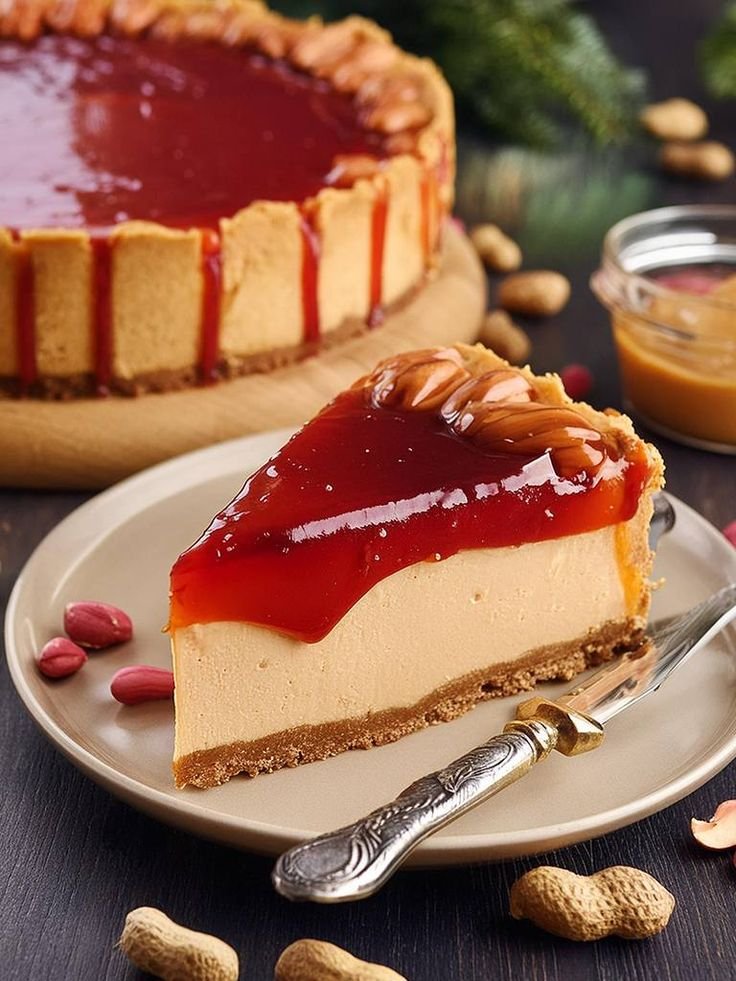If you grew up loving the classic peanut butter and jelly sandwich, then you’re going to adore the Peanut Butter and Jelly Cheesecake—a fun and nostalgic twist on a beloved favorite. This cheesecake brings together the creamy richness of peanut butter with the sweet, fruity burst of jelly, all layered over a crunchy crust.
It’s a perfect dessert that feels familiar yet excitingly new. Whether you’re craving something indulgent for a family gathering or want to impress friends with a unique treat, this cheesecake hits all the right notes.
The combination of flavors is comforting and satisfying, making it a great choice for peanut butter fans and cheesecake lovers alike. In this recipe, you’ll learn how to create a smooth, velvety cheesecake with swirls of jelly that add just the right amount of sweetness and color. Get ready to take your taste buds on a delightful journey with this Peanut Butter and Jelly Cheesecake!
Ingredients

Creating the perfect Peanut Butter and Jelly Cheesecake starts with gathering the right ingredients. Each component plays a key role in balancing the rich, creamy peanut butter with the sweet, fruity jelly, all layered over a delicious crust. Below is a detailed breakdown of what you’ll need to make this nostalgic dessert come to life.
For the Crust
The crust provides a crunchy, buttery base that complements the creamy filling. You’ll need 1 ½ cups of graham cracker crumbs, which give a classic, slightly sweet foundation. Add ⅓ cup of melted unsalted butter to bind the crumbs together, and 2 tablespoons of granulated sugar for just a hint of extra sweetness. If you prefer a slightly saltier contrast, a pinch of salt helps enhance the flavors.
For the Cheesecake Filling
The filling is where the peanut butter magic happens. Start with 3 packages (8 ounces each) of cream cheese, softened to room temperature to ensure a smooth, lump-free texture. Add 1 cup of creamy peanut butter—choose a good-quality, smooth variety for the best flavor and consistency. You’ll also need 1 cup of granulated sugar to sweeten the filling and 1 teaspoon of pure vanilla extract to enhance all the flavors.
To keep the cheesecake rich and velvety, use 3 large eggs, adding them one at a time and mixing just until combined to avoid overmixing. Finally, ½ cup of sour cream or Greek yogurt adds moisture and tang, balancing the sweetness and giving the cheesecake a luscious texture.
For the Jelly Swirl
The star of the show, the jelly, adds bursts of fruity sweetness. Use about ½ to ¾ cup of your favorite jelly or jam—classic grape or strawberry work wonderfully. Make sure it’s slightly warmed or softened so it can easily swirl through the batter without sinking to the bottom.
Optional Toppings
For added texture and decoration, you might want to include chopped peanuts or a drizzle of melted peanut butter on top. Fresh berries or a dusting of powdered sugar can also elevate the presentation and flavor.
Equipment Needed

To make a delicious Peanut Butter and Jelly Cheesecake, having the right equipment on hand will make the process smooth and enjoyable. While the recipe itself is straightforward, the proper tools ensure that your cheesecake turns out perfectly creamy, evenly baked, and beautifully presented. Here’s a breakdown of the essential equipment you’ll need.
Springform Pan
A springform pan is the best choice for baking cheesecakes because it allows for easy removal without damaging the delicate sides. Typically, an 8- or 9-inch pan works well for this recipe. The removable sides make slicing and serving your Peanut Butter and Jelly Cheesecake much simpler.
Mixing Bowls
You’ll need at least two mixing bowls: one for combining the crust ingredients and another larger one for the cheesecake filling. Opt for medium to large-sized bowls to give yourself plenty of room to mix without spilling.
Electric Mixer
An electric hand mixer or stand mixer is essential for achieving a smooth, lump-free cheesecake batter. Cream cheese can be dense, so using a mixer helps blend it thoroughly with the peanut butter and sugar. This tool also makes beating in the eggs and sour cream much easier and faster.
Measuring Cups and Spoons
Accurate measurements are key to baking success. Use a set of measuring cups and spoons to measure your dry ingredients like graham cracker crumbs, sugar, and peanut butter, as well as your wet ingredients like vanilla extract and eggs.
Rubber Spatula
A flexible rubber spatula is invaluable for scraping down the sides of your mixing bowl to ensure all ingredients are fully incorporated. It also helps when folding in the jelly swirl to keep the batter light and airy.
Saucepan or Microwave-Safe Bowl
If you prefer to soften or warm the jelly before swirling it into the cheesecake, a small saucepan or microwave-safe bowl will come in handy. Gently heating the jelly makes it easier to create beautiful swirls in the batter.
Baking Sheet
Placing your springform pan on a baking sheet before putting it in the oven can help catch any drips, especially if you use a water bath to prevent cracking. It also makes handling the cheesecake easier when moving it in and out of the oven.
Cooling Rack
After baking, the cheesecake should cool on a wire rack. This allows air to circulate around the pan, helping it cool evenly and preventing condensation from making the crust soggy.
Step-by-Step Instructions

Making the perfect Peanut Butter and Jelly Cheesecake is easier than you might think, especially when you follow clear, detailed steps. This section will guide you through every stage of the process, from preparing the crust to adding the delicious jelly swirl, ensuring a creamy and flavorful dessert that impresses every time.
Step 1: Prepare the Crust
Begin by preheating your oven to 325°F (163°C). In a medium mixing bowl, combine 1 ½ cups of graham cracker crumbs with ⅓ cup of melted unsalted butter and 2 tablespoons of granulated sugar. Stir until the mixture resembles wet sand and the crumbs are evenly coated. Press this mixture firmly and evenly into the bottom of a greased 8- or 9-inch springform pan. Use the back of a spoon or a flat-bottomed glass to create a compact crust layer. Bake the crust for about 10 minutes, then remove it from the oven and set it aside to cool while you prepare the filling.
Step 2: Make the Cheesecake Filling
In a large mixing bowl, beat 3 packages (8 ounces each) of softened cream cheese with 1 cup of creamy peanut butter until smooth and creamy. Use an electric mixer on medium speed to avoid lumps. Gradually add 1 cup of granulated sugar and continue to beat until fully combined. Next, add 3 large eggs one at a time, mixing on low speed after each addition just until incorporated. Avoid overmixing, which can cause cracks later. Add ½ cup of sour cream and 1 teaspoon of vanilla extract, mixing until the batter is silky and smooth.
Step 3: Prepare the Jelly Swirl
In a small bowl, slightly warm ½ to ¾ cup of your favorite jelly or jam in the microwave for about 15–20 seconds. This makes it easier to swirl into the batter without sinking. Stir gently to loosen the jelly so it has a pourable consistency but is not too runny.
Step 4: Assemble the Cheesecake
Pour about two-thirds of the peanut butter cheesecake batter over the cooled crust, smoothing the surface with a spatula. Dollop spoonfuls of the warmed jelly evenly over the batter. Pour the remaining cheesecake batter on top, spreading gently to cover the jelly. Using a butter knife or skewer, swirl the jelly through the batter to create a marbled effect. Be careful not to overmix; you want distinct swirls, not a fully blended mixture.
Step 5: Bake the Cheesecake
Place the springform pan on a baking sheet and bake in the preheated oven for 50 to 60 minutes. The edges should be set, but the center will still have a slight jiggle. To prevent cracking, you can bake the cheesecake in a water bath by placing the springform pan inside a larger pan filled with hot water reaching halfway up the sides. This provides gentle, even heat.
Step 6: Cool and Chill
Turn off the oven, crack the door open, and let the cheesecake cool inside for 1 hour. This slow cooling process helps prevent cracks. Afterward, remove the cheesecake from the oven and cool it completely on a wire rack. Once cooled, refrigerate for at least 4 hours or overnight to allow it to fully set and develop flavors.
Step 7: Serve and Enjoy
Before serving, run a knife around the edges of the springform pan to loosen the cheesecake, then carefully remove the sides. Slice with a sharp knife dipped in warm water and wiped dry for clean cuts. Serve your Peanut Butter and Jelly Cheesecake as is, or garnish with chopped peanuts, extra jelly drizzles, or whipped cream for added flair.
Tips for Perfect Peanut Butter and Jelly Cheesecake

Achieving the perfect Peanut Butter and Jelly Cheesecake is all about attention to detail. From selecting the right ingredients to mastering the baking process, these tips will help you create a creamy, smooth, and beautifully swirled dessert every time. Here’s what you need to keep in mind to get that flawless finish.
Use Room Temperature Ingredients
For a smooth and lump-free cheesecake batter, make sure your cream cheese, eggs, and peanut butter are at room temperature before mixing. Cold ingredients can cause the batter to be uneven and may lead to lumps, which can affect the texture of your cheesecake.
Don’t Overmix the Batter
While it’s important to blend the ingredients well, overmixing can introduce too much air into the batter, which may cause cracks on the surface during baking. Mix just until everything is combined and smooth, especially after adding the eggs.
Warm the Jelly for Easy Swirling
Heating your jelly slightly before swirling it into the batter helps it blend more easily and creates beautiful, defined swirls. Be careful not to overheat or make it too runny, as this can cause the jelly to sink to the bottom instead of staying in pretty ribbons.
Use a Water Bath for Even Baking
Baking the cheesecake in a water bath (placing your springform pan inside a larger pan with hot water) helps maintain consistent moisture and temperature, preventing cracks and dryness. The gentle steam creates a perfect environment for a creamy cheesecake.
Cool the Cheesecake Slowly
After baking, avoid shocking your cheesecake with sudden temperature changes. Let it cool gradually in the oven with the door slightly open, then move it to a wire rack before refrigerating. This slow cooling process reduces the chances of cracking and helps the cheesecake set properly.
Chill Thoroughly Before Serving
Cheesecake tastes best after chilling for at least 4 hours or overnight. This resting time allows the flavors to meld and the texture to firm up, making it easier to slice cleanly and enhancing the overall taste experience.
Use a Sharp Knife for Clean Slices
When you’re ready to serve, dip a sharp knife in hot water and wipe it dry before slicing. This simple trick helps create smooth, clean cuts without dragging or tearing the cheesecake.
Variations and Substitutions
One of the great things about the Peanut Butter and Jelly Cheesecake is how easily you can customize it to suit your tastes or dietary needs. Whether you want to switch up the flavors or make it allergy-friendly, here are some popular variations and substitutions to inspire you.
Flavor Variations
If you’re looking to experiment beyond the classic peanut butter and grape jelly combo, try different nut butters like almond butter or cashew butter for a unique twist. These alternatives offer a slightly different flavor profile but maintain that creamy richness. For the jelly or jam, you can swap grape or strawberry for raspberry, blackberry, or even apricot, depending on your preference. Mixing and matching nut butters with complementary fruit preserves can make your cheesecake truly one-of-a-kind.
Crust Alternatives
Instead of the traditional graham cracker crust, you can use crushed digestive biscuits, vanilla wafers, or even chocolate cookie crumbs to add a different texture and flavor base. For a gluten-free option, try gluten-free cookies or almond flour mixed with melted butter. These variations work well and still provide a firm, tasty foundation for the cheesecake.
Dairy Substitutions
To make the cheesecake suitable for those with dairy intolerance or vegan diets, consider replacing cream cheese and sour cream with plant-based alternatives like vegan cream cheese and coconut yogurt. Use a flax or chia egg substitute to replace eggs. Keep in mind that texture and flavor may vary slightly, but these swaps still result in a delicious cheesecake.
Sweetener Swaps
If you want to reduce refined sugar, substitute granulated sugar with natural sweeteners like honey, maple syrup, or coconut sugar. When doing this, adjust the amount slightly and taste the batter to ensure it’s sweet enough. Using natural sweeteners can add an extra depth of flavor to your cheesecake.
Toppings and Garnishes
Feel free to customize the toppings based on your preferences. Fresh berries, chopped nuts, chocolate drizzle, or a dollop of whipped cream can all enhance your Peanut Butter and Jelly Cheesecake. Toasted coconut or a sprinkle of sea salt also adds an interesting texture and flavor contrast.
Storage and Serving Suggestions
Knowing how to store and serve your Peanut Butter and Jelly Cheesecake properly is key to preserving its rich flavor and creamy texture. This section will guide you through the best ways to keep your cheesecake fresh and ideas for presenting it beautifully.
Proper Storage Techniques
To maintain the freshness and texture of your cheesecake, always store it in the refrigerator. After baking and allowing it to cool completely, cover the cheesecake tightly with plastic wrap or aluminum foil, or transfer it to an airtight container. This helps prevent it from absorbing any unwanted odors from other foods in the fridge. Your cheesecake will stay fresh for up to 5 days when stored this way.
Freezing for Longer Storage
If you want to keep your cheesecake for longer, freezing is an excellent option. Wrap the cheesecake tightly in plastic wrap and then in aluminum foil to protect it from freezer burn. You can freeze the whole cheesecake or individual slices for easier thawing later. When ready to enjoy, thaw it in the refrigerator overnight. Avoid thawing at room temperature to keep the texture smooth and prevent spoilage.
Serving Temperature Tips
For the best flavor and texture, serve your cheesecake chilled but not too cold. About 15 to 30 minutes at room temperature before serving allows the flavors to open up and the texture to soften slightly, making it easier to cut and enjoy.
Presentation Ideas
Make your Peanut Butter and Jelly Cheesecake look as delicious as it tastes with a few simple serving suggestions. Garnish the top with fresh berries, a drizzle of extra jelly, or a sprinkle of chopped peanuts for added crunch. A dollop of whipped cream or a dusting of powdered sugar can also add a nice touch of elegance. For special occasions, consider serving cheesecake slices with a scoop of vanilla ice cream or a side of fresh fruit.
Portioning Tips
Use a sharp knife dipped in warm water and wiped dry before slicing to achieve clean, neat slices. This prevents the cheesecake from sticking to the knife and keeps your servings looking perfect.
Frequently Asked Questions
What Makes Peanut Butter and Jelly Cheesecake Different From Traditional Cheesecake?
Peanut Butter and Jelly Cheesecake combines the classic creamy texture of cheesecake with the nostalgic flavors of peanut butter and fruit jelly. Unlike traditional cheesecakes, which focus on plain cream cheese or fruit toppings, this version swirls peanut butter into the batter and adds a jelly swirl for a fun, rich, and slightly tangy twist. This combination creates a unique balance of sweet, salty, and fruity flavors that appeals to both kids and adults alike.
Can I Use Any Type of Jelly or Jam For This Cheesecake?
Absolutely! While grape and strawberry jelly are the most popular choices, you can customize your cheesecake with any jelly or jam you love. Raspberry, blackberry, apricot, or even mixed berry jams work wonderfully. The key is to slightly warm the jelly before swirling it into the batter, so it creates beautiful patterns without sinking to the bottom.
How Do I Prevent Cracks on My Peanut Butter and Jelly Cheesecake?
Cracks can happen due to overmixing or sudden temperature changes while baking. To avoid this, mix your batter gently just until combined, and consider baking your cheesecake in a water bath to provide even, moist heat. After baking, allow your cheesecake to cool slowly by leaving the oven door slightly open, then refrigerate it thoroughly. These steps help maintain a smooth, crack-free surface.
Can I Make This Cheesecake Ahead of Time?
Yes, you can! Peanut Butter and Jelly Cheesecake actually benefits from resting. Prepare it a day in advance and refrigerate it overnight. This resting time allows the flavors to meld and the texture to firm up, making it easier to slice and enhancing the overall taste.
What Are Some Good Substitutions for Peanut Butter in This Recipe?
If you or someone you’re serving has a peanut allergy, you can substitute peanut butter with almond butter, cashew butter, or sunflower seed butter. These alternatives offer a similar creamy texture and nutty flavor. Just make sure to choose natural, unsweetened nut butters for the best taste and consistency.
How Should I Store Leftover Peanut Butter and Jelly Cheesecake?
Store leftover cheesecake in an airtight container or wrap it tightly with plastic wrap to prevent it from drying out or absorbing odors. Keep it refrigerated, and it will stay fresh for up to five days. If you want to store it longer, freeze the cheesecake tightly wrapped and thaw it in the refrigerator before serving for the best texture and flavor.
Conclusion
Peanut Butter and Jelly Cheesecake is a delightful twist on a classic favorite, combining rich, creamy cheesecake with the nostalgic flavors of peanut butter and sweet jelly. With this ultimate guide, you now have all the tips, variations, and step-by-step instructions to create a perfect, show-stopping dessert that’s sure to impress.
Whether you stick to the traditional flavors or try exciting substitutions, this cheesecake offers something for every palate. Remember to follow the baking and storage tips to keep your cheesecake smooth, flavorful, and fresh. So go ahead, whip up this delicious treat, and enjoy a slice of comfort and creativity that’s perfect for any occasion or celebration!

